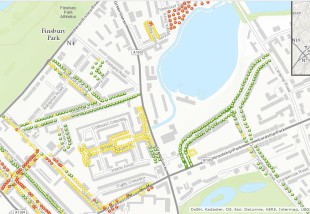Articles
The Heat is on; let’s make our connections count.
Tweet
By Samantha Heath, Chief Executive, London Sustainability Exchange
The impact of climate change is now with us, and will affect us all in different ways; inner city communities that are diverse, deprived can be more vulnerable to the impacts of extreme weather, but in many ways have a very strong appetite for developing their own resilience.
Whilst we are all social animals, very often more deprived communities can have a mutual understanding that can benefit from connectedness the most. The sense of not being at ease can help develop an engine for change. The power of working with communities can help us unlock that without triggering the race to the bottom.
Last year we started work with a small community in Manor House (see the above map) that were very keen to explore the impact of climate change in their area and to develop resilience. The PACT programme supported a strong connectedness by addressing fuel poverty, food growing, enjoying the external environment with foraging, developing skills and becoming work ready. Team LSx brought two specific elements to this – identifying the impact of extreme weather and addressing pollution problems. Our task was to train and support local volunteers to map and identify the impact that extreme weather would have in terms of community resilience and the homes that people lived in.
The issues that our enthusiastic volunteers were keen to explore were around social capital and connectedness as well as better understood factors such as the state of the local housing stock or how much money people had.
Some elements of extreme weather naturally brings out a natural community response or ‘Dunkirk spirit’, whilst other extreme weather events such as overheating are less overtly a threat to health and people may suffer in isolation. We found that around Manor House area was unlikely to be flooded but our volunteers found out there were a number of homes that were at risk from substantial overheating. Our key response was
• to identify homes at risk
• consider easy retrofit solutions
• Ensure social capital provided strong resilience
• Making sure there is a network of cooling open spaces
So as well we know it’s about who we know as much as what we know – a key to resilience is about identifying those who are home alone, identifying strong connections or social infrastructure – knitting and nattering, befriending groups, faith groups that are around to help people become more resilient.

Leave a Reply